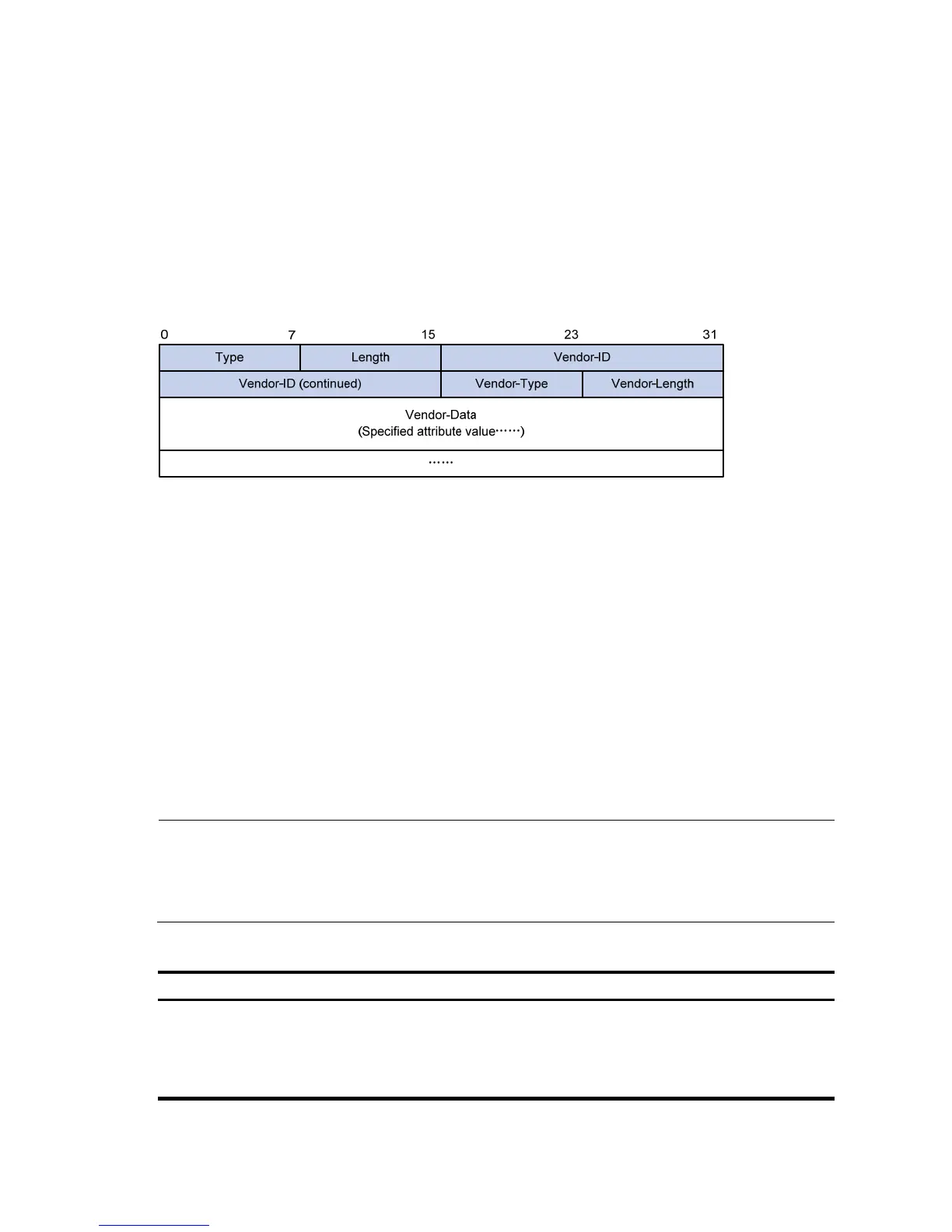A vendor can encapsulate multiple sub-attributes in the type-length-value (TLV) format in RADIUS packets for
extension of applications. As shown in a, a sub-attribute that can be encapsulated in Attribute 26 consists
of the following parts:
Vendor-ID—Indicates the ID of the vendor. Its most significant byte is 0; the other three bytes contains
a code that is compliant to RFC 1700.
Vendor-Type—Indicates the type of the sub-attribute.
Vendor-Length—Indicates the length of the sub-attribute.
Vendor-Data—Indicates the contents of the sub-attribute.
a. Segment of a RADIUS packet containing an extended attribute
Protocols and standards
RFC 2865, Remote Authentication Dial In User Service (RADIUS)
RFC 2866, RADIUS Accounting
RFC 2867, RADIUS Accounting Modifications for Tunnel Protocol Support
RFC 2868, RADIUS Attributes for Tunnel Protocol Support
RFC 2869, RADIUS Extensions
Configuring RADIUS
Configuration task list
NOTE:
The RADIUS scheme configured through the web interface is named system.
If there is no RADIUS scheme named system in the system, when you select Authentication RADIUS
to enter the RADIUS module, a scheme named system is created automatically.
1. RADIUS configuration task list
Task Descri
tion
Configuring RADIUS
authentication servers
Required
Configure the information related to the primary and
secondary RADIUS authentication servers.
By default, no RADIUS authentication server is configured.
For more
information, see
“Configuring
RADIUS servers.”

